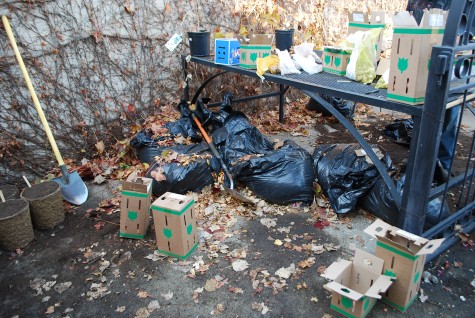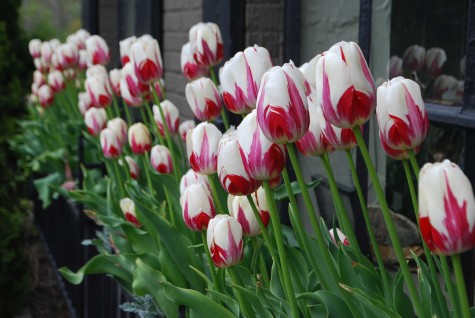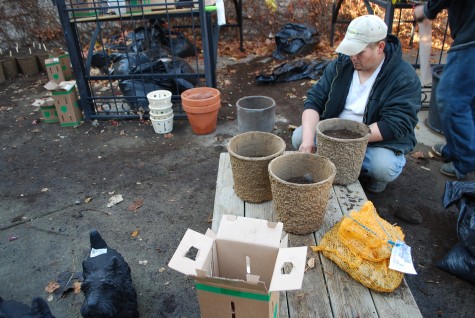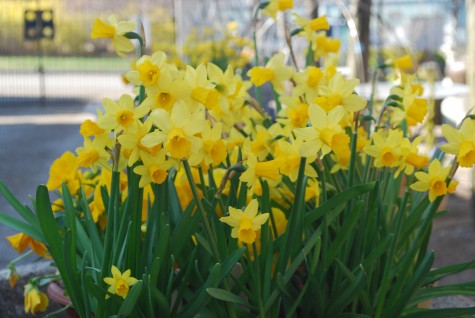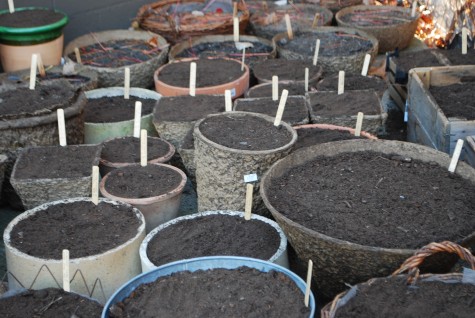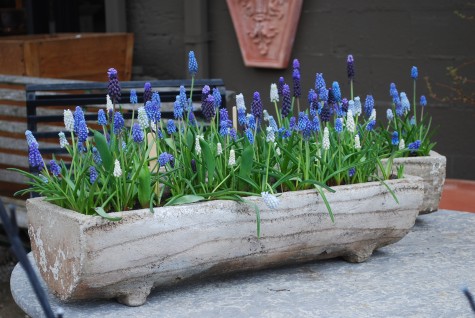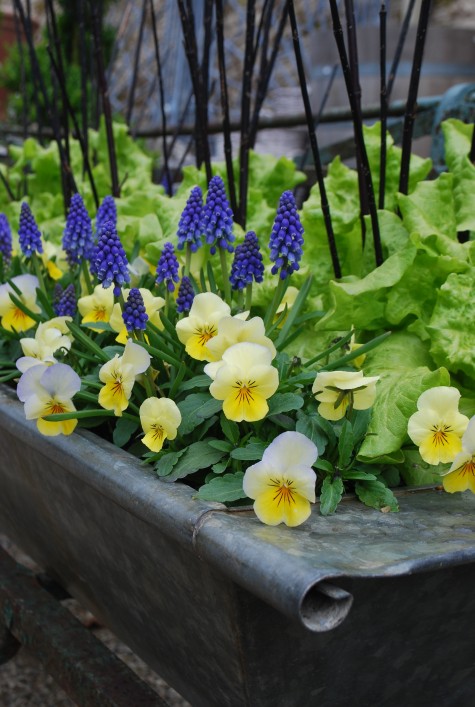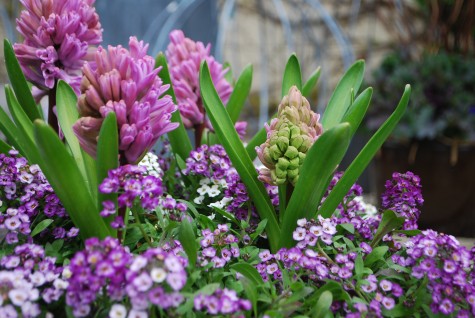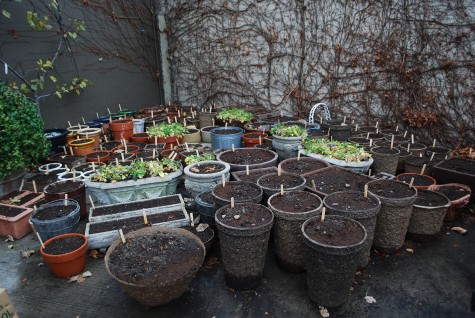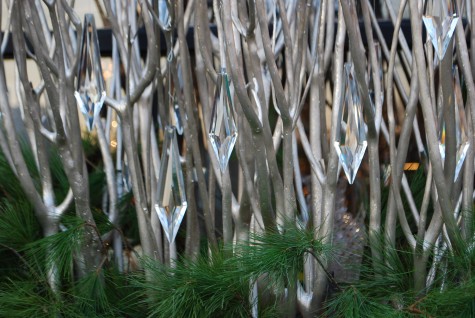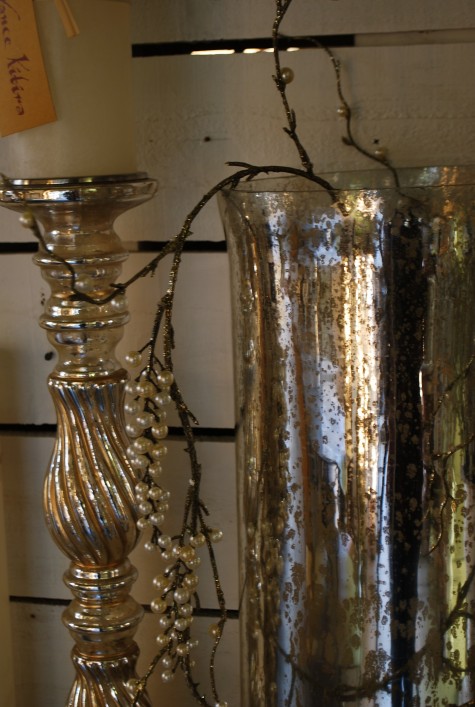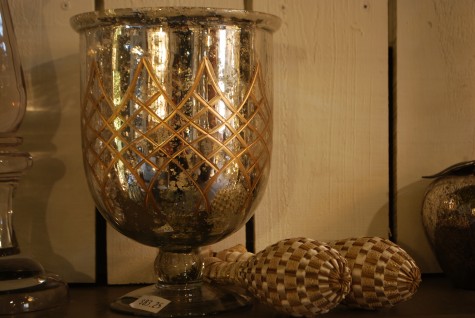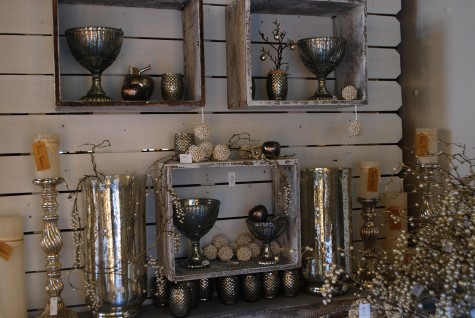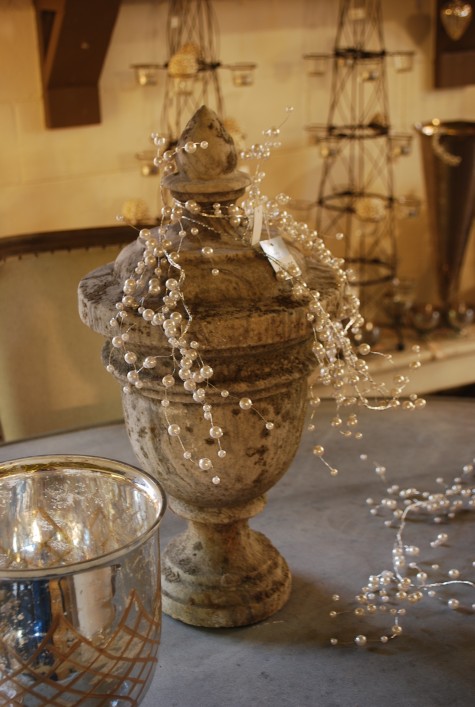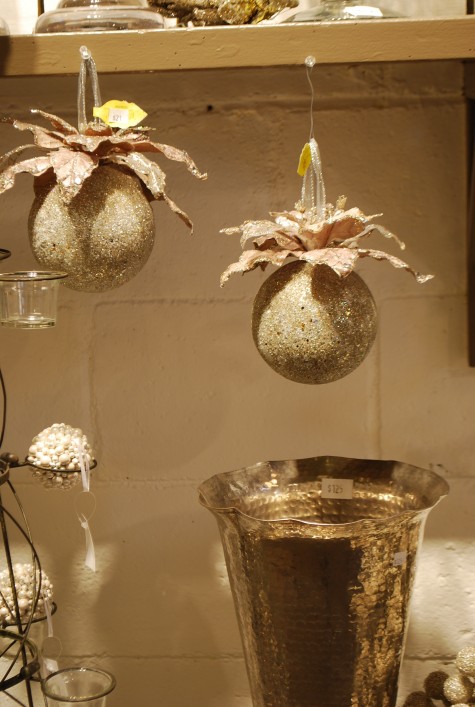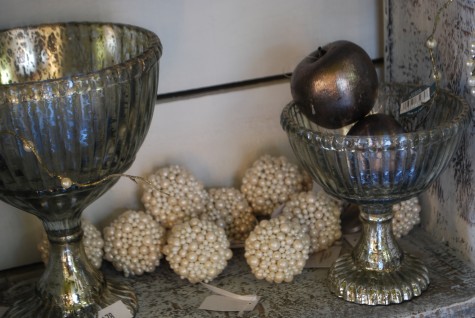 The coarse woven jute fabric known as burlap is a familiar, essential, and serviceable material- well known to gardeners. B and B, to the trade, refers to the process of digging, and protecting the integrity of a rootball, so a plant can be successfully transplanted. A broken rootball can kill a tree. Sizing a ball properly, and fitting the burlap snug and secure with nursery nails requires a good eye, and some skill. An expertly burlapped rootball is a handsome thing to behold. The natural jute will rot over time, freeing the roots in the ball to establish in the surrounding soil. A burlap fence protect new plants, and salt-sensitive evergreens; burlap provides enclosure and protection.
The coarse woven jute fabric known as burlap is a familiar, essential, and serviceable material- well known to gardeners. B and B, to the trade, refers to the process of digging, and protecting the integrity of a rootball, so a plant can be successfully transplanted. A broken rootball can kill a tree. Sizing a ball properly, and fitting the burlap snug and secure with nursery nails requires a good eye, and some skill. An expertly burlapped rootball is a handsome thing to behold. The natural jute will rot over time, freeing the roots in the ball to establish in the surrounding soil. A burlap fence protect new plants, and salt-sensitive evergreens; burlap provides enclosure and protection.
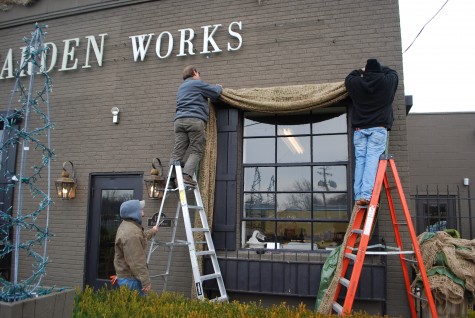 I am in the process of the holiday and winter dressing of the shop. My landscape crews, under Steve’s direction, have no problem shifting from planting balled and burlapped in the ground to dressing the shop windows with burlap drapes. The drapery workroom is open for the season.
I am in the process of the holiday and winter dressing of the shop. My landscape crews, under Steve’s direction, have no problem shifting from planting balled and burlapped in the ground to dressing the shop windows with burlap drapes. The drapery workroom is open for the season.
 The drapes over the shop windows-my crew got every move right. The swags are just so, and securely wired. We will keep them up all winter, so a weather resistant installation is important. Burlap drapes do not keep anything warm, but they look warm I like the idea that my shop is getting its winter coat. The Eupatorium capillifolium in the roof boxes is aptly described by its common name-elegant feather grass. It was graceful and gorgeous all summer. I was not prepared for how beautiful and durable the fall color would be; the needle-like foliage shows no signs of dropping.
The drapes over the shop windows-my crew got every move right. The swags are just so, and securely wired. We will keep them up all winter, so a weather resistant installation is important. Burlap drapes do not keep anything warm, but they look warm I like the idea that my shop is getting its winter coat. The Eupatorium capillifolium in the roof boxes is aptly described by its common name-elegant feather grass. It was graceful and gorgeous all summer. I was not prepared for how beautiful and durable the fall color would be; the needle-like foliage shows no signs of dropping.
 Why not try keeping that grass hedge in the boxes all winter? These small dried magnolia wreath drapery tiebacks repeat that rich cinnamon-brown color in evidence on the roof. Holiday decor that takes its cue from the garden-this I like. Every landscape, garden, and garden shed has raw materials that can be transformed into a celebration.
Why not try keeping that grass hedge in the boxes all winter? These small dried magnolia wreath drapery tiebacks repeat that rich cinnamon-brown color in evidence on the roof. Holiday decor that takes its cue from the garden-this I like. Every landscape, garden, and garden shed has raw materials that can be transformed into a celebration.
 The lindens on the drive are in the process of having their winter coats fitted. Wrapping the trunks of trees to prevent injury from the cold is common practice in many gardening cultures. Tree trunks in Japanese gardens and cities are beautifully wrapped with rice straw matting for the winter. Cold climate afficianados of cycads hoping to overwinter their plants in the ground will wrap the trunks. The lindens on the drive are getting winter coats of the strictly ornamental kind.
The lindens on the drive are in the process of having their winter coats fitted. Wrapping the trunks of trees to prevent injury from the cold is common practice in many gardening cultures. Tree trunks in Japanese gardens and cities are beautifully wrapped with rice straw matting for the winter. Cold climate afficianados of cycads hoping to overwinter their plants in the ground will wrap the trunks. The lindens on the drive are getting winter coats of the strictly ornamental kind.
 A fabric reminiscent of moss comprises the first layer; the open weave burlap goes over top. Each layer is temporarily secured with jute string; the seams are blanket stitched with wire. The loose ends of the burlap are rolled over and tucked into a wide band of multiple strands of jute twine.
A fabric reminiscent of moss comprises the first layer; the open weave burlap goes over top. Each layer is temporarily secured with jute string; the seams are blanket stitched with wire. The loose ends of the burlap are rolled over and tucked into a wide band of multiple strands of jute twine.
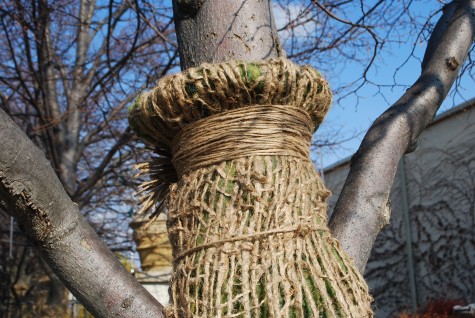 kFrom the street, the two layers of fabric are neatly secured. The lindens look warmer already.
kFrom the street, the two layers of fabric are neatly secured. The lindens look warmer already.

A jute bow will complete the look. Though these tree trunks are unlikely to suffer any sun scald over the winter, they look protected, and dressed for cold weather.
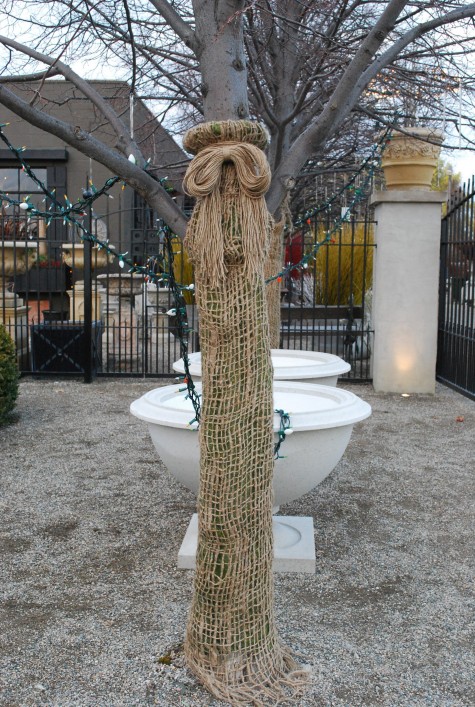
We swagged a light garland through the canopy of the tree to provide some interest to the display at night. The bows need adjusting, the drapes need some branches secured on the insides to fluff them out-the finishing details are yet to come. More on that later.

